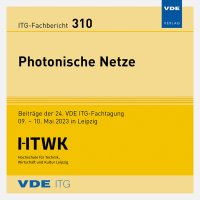Learning to exploit z-Spatial Diversity for Coherent Nonlinear Optical Fiber Communication
Conference: Photonische Netze - 24. ITG-Fachtagung
05/09/2023 - 05/10/2023 at Berlin
Proceedings: ITG-Fb. 310: Photonische Netze
Pages: 5Language: englishTyp: PDF
Authors:
Jung, Sebastian; Uhlemann, Tim; Span, Alexander; Bauhofer, Maximilian; ten Brink, Stephan (Institute of Telecommunications, University of Stuttgart, Germany)
Abstract:
Higher-order solitons inherently possess a spatial periodicity along the propagation axis. The pulse expands and compresses in both, frequency and time domain. This property is exploited for a bandwidth-limited receiver by sampling the optical signal at two different distances. Numerical simulations show that when pure solions are transmitted and the second (i.e., further propagated) signal is also processed, a significant gain in terms of required receiver bandwidth is obtained. Since all pulses propagating in a nonlinear optical fiber exhibit solitonic behavior given sufficient input power and propagation distance, the above concept can also be applied to spectrally efficient Nyquist pulse shaping and higher symbol rates. Transmitter and receiver are trainable structures as part of an autoencoder, aiming to learn a suitable predistortion and post-equalization using both signals to increase the spectral efficiency.


